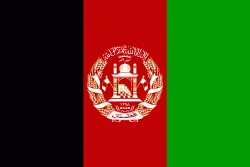Nahrin District (Nahrīn)
Nahrin District is a district in the central part of Baghlan Province in Afghanistan. To the west lie the major towns of Baghlan and Puli Khumri. The district centre is Nahrin. The population of the district was estimated to be around 57,509 in 2004, of which 60% are Tajiks, 35% Pashtun and 5% Uzbeks.
On 25 March 2002, a major earthquake shook Nahrin District, causing significant loss of life and enormous damage to infrastructure and water resources. The earthquake measured 5.9 on the Richter scale with the epicentre almost directly on Nahrin City, at the relatively shallow depth of 33 km. A second earthquake hit Nahrin on 12 April 2002. More damage was brought to an already devastated area of Nahrin City, while at the same time heavily damaging several additional villages. The region also experienced three years of ruinous drought.
On 25 March 2002, a major earthquake shook Nahrin District, causing significant loss of life and enormous damage to infrastructure and water resources. The earthquake measured 5.9 on the Richter scale with the epicentre almost directly on Nahrin City, at the relatively shallow depth of 33 km. A second earthquake hit Nahrin on 12 April 2002. More damage was brought to an already devastated area of Nahrin City, while at the same time heavily damaging several additional villages. The region also experienced three years of ruinous drought.
Map - Nahrin District (Nahrīn)
Map
Country - Afghanistan
 |
 |
| Flag of Afghanistan | |
Human habitation in Afghanistan dates back to the Middle Paleolithic era, and the country's strategic location along the historic Silk Road has led it to being described, picturesquely, as the ‘roundabout of the ancient world’. Popularly referred to as the graveyard of empires, the land has historically been home to various peoples and has witnessed numerous military campaigns, including those by the Persians, Alexander the Great, the Maurya Empire, Arab Muslims, the Mongols, the British, the Soviet Union, and most recently by a US-led coalition. Afghanistan also served as the source from which the Greco-Bactrians and the Mughals, amongst others, rose to form major empires. The various conquests and periods in both the Iranian and Indian cultural spheres made the area a center for Zoroastrianism, Buddhism, Hinduism, and later Islam throughout history.
Currency / Language
| ISO | Currency | Symbol | Significant figures |
|---|---|---|---|
| AFN | Afghan afghani | Ø‹ | 2 |
| ISO | Language |
|---|---|
| PS | Pashto language |
| FA | Persian language |
| TK | Turkmen language |
| UZ | Uzbek language |















